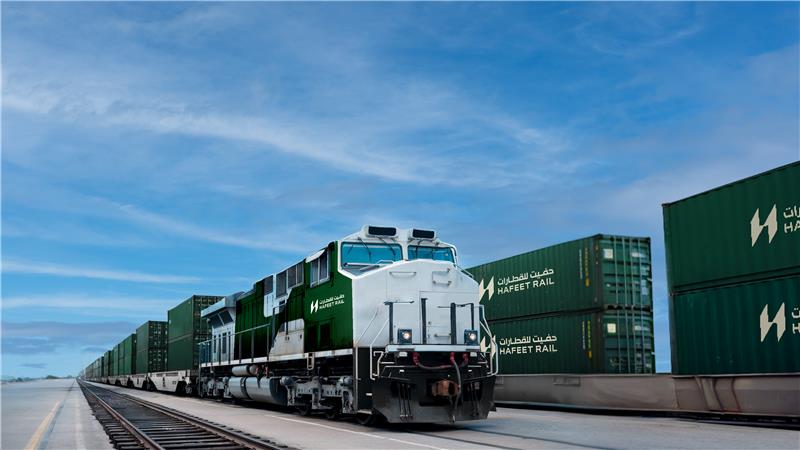The UAE National Railway Programme is one of the most ambitious infrastructure projects in the United Arab Emirates’ history. With an estimated investment of $13.6 billion, the programme is set to deliver more than $54.5 billion in economic benefits, transforming the country’s transport, trade, and industrial sectors. The railway network promises to redefine mobility, enhance trade efficiency, promote sustainable development, and stimulate economic growth in unprecedented ways.
A Visionary Project for the UAE
The UAE’s leadership has long emphasized sustainable development and innovation as pillars of national progress. The National Railway Programme is part of this vision, aiming to create a fully integrated rail network connecting all seven emirates. The project is designed to facilitate the smooth movement of both passengers and freight across the country, ensuring seamless domestic and regional connectivity.
The programme aligns with the UAE’s broader goals of economic diversification, enhanced safety, and environmental sustainability. By providing an alternative to road transport, the railway will reduce congestion, decrease accidents, and help lower carbon emissions, contributing to a cleaner and safer environment.

Scope of the Railway Network
The National Railway Programme spans approximately 1,200 kilometers, connecting major cities and economic hubs across the UAE. From the Saudi border in the west to the Omani border in the east, the railway network will pass through key urban and industrial areas, linking ports, free zones, and population centers.
The network is designed to accommodate both high-speed passenger trains and efficient freight services. Passenger trains are expected to operate at speeds of up to 200 km/h, offering rapid, comfortable, and reliable travel across the country. Freight trains, capable of carrying millions of tonnes of goods annually, will travel at speeds of up to 120 km/h, ensuring timely delivery and efficient supply chain operations.

Key Features of the Programme
- High-Speed Passenger Services: Fast, comfortable, and reliable rail travel for residents and tourists.
- Freight Transport Efficiency: Transportation of up to 60 million tonnes of goods per year.
- Integration with Ports and Industrial Zones: Smooth connection of major ports and industrial hubs for better trade flow.
- Sustainable Infrastructure: Eco-friendly design and operation to reduce environmental impact.
- Regional Connectivity: Potential links to neighboring GCC countries, enhancing trade and mobility.
Economic Benefits of the Railway Programme
The economic impact of the UAE National Railway Programme is expected to be enormous. With a $13.6 billion investment, the project is projected to generate more than $54.5 billion in economic benefits, creating opportunities across multiple sectors. These benefits include direct financial gains, productivity improvements, and broader socioeconomic advantages.
1. Enhanced Trade and Logistics
One of the primary drivers of economic benefit is the railway’s impact on trade and logistics. By connecting ports, industrial zones, and urban centers, the railway will streamline the movement of goods, reduce transportation costs, and increase supply chain efficiency. Businesses will be able to move products faster and more reliably, reducing delays and supporting trade growth both domestically and internationally.
Efficient freight transport is particularly important for heavy industries and manufacturing. The railway will allow companies to transport bulk goods over long distances at lower costs than road transport. This efficiency is expected to encourage industrial growth, attract new investments, and strengthen the UAE’s position as a regional trade hub.
2. Job Creation and Economic Diversification
Large-scale infrastructure projects are major catalysts for job creation. The construction and operation of the National Railway Programme will generate thousands of employment opportunities in construction, engineering, logistics, operations, and maintenance. These jobs span both skilled and semi-skilled sectors, contributing to workforce development and economic diversification.
Moreover, the railway network will stimulate related industries, such as manufacturing, logistics services, technology solutions, and hospitality. By promoting a diverse range of economic activities, the programme supports the UAE’s broader goals of reducing reliance on oil revenues and building a resilient economy.
3. Increased Productivity and Reduced Costs
The railway network will significantly reduce travel times for both passengers and freight. This improvement in efficiency translates into higher productivity, as businesses can transport goods more quickly and employees can commute more reliably. Reduced road congestion and lower vehicle operating costs will also save money for both businesses and households.
By shifting freight from road to rail, the programme will reduce wear and tear on highways, decrease fuel consumption, and minimize traffic-related delays. This creates a ripple effect of economic benefits across multiple sectors, from transportation to retail and manufacturing.
4. Boost to Tourism
Tourism is a vital sector for the UAE’s economy, and the National Railway Programme is expected to enhance the tourism experience. Fast, comfortable rail connections between key cities and airports will make it easier for tourists to explore the country. Convenient travel options encourage longer stays and higher spending, boosting revenues for hotels, restaurants, and local attractions.
The railway will also support regional tourism, as improved connectivity may attract visitors from neighboring countries, creating new opportunities for cross-border tourism and cultural exchange.
5. Urban Development and Land Value Appreciation
Railway infrastructure has a transformative effect on urban landscapes. Areas surrounding stations often experience increased economic activity, higher property values, and urban revitalization. The UAE National Railway Programme is expected to stimulate development in its corridor areas, attracting investments in commercial, residential, and mixed-use projects.
Improved accessibility can encourage the growth of new business districts, residential communities, and logistics hubs, creating vibrant, well-connected urban spaces. This effect contributes not only to economic benefits but also to improved quality of life for residents.

Environmental Impact and Sustainability
A core objective of the National Railway Programme is environmental sustainability. By providing an alternative to trucks and private vehicles, the railway will reduce greenhouse gas emissions and lower the carbon footprint of the transportation sector. This shift supports the UAE’s Net Zero by 2050 strategy and reinforces the country’s commitment to sustainable development.
In addition to reducing emissions, the railway infrastructure itself will incorporate green technologies. Energy-efficient stations, modern signaling systems, and environmentally friendly construction practices will minimize the ecological impact of the project. The programme’s sustainable approach positions it as a model for infrastructure development in the region.
Safety and Road Congestion Reduction
Road safety is another major benefit of the UAE National Railway Programme. By transferring freight from trucks to trains, the railway will reduce the number of heavy vehicles on highways, which in turn lowers the risk of accidents. Less road congestion will not only enhance safety but also improve travel times for commuters and commercial traffic.
This focus on safety aligns with national goals of creating a more secure and efficient transportation system. The benefits are widespread, affecting drivers, passengers, and businesses that rely on road transport for daily operations.
Integration with Regional Networks
The UAE National Railway Programme is not only a domestic initiative but also a potential gateway to regional connectivity. Plans to link with rail networks in neighboring GCC countries could open new opportunities for trade, tourism, and economic collaboration. Such integration would create a seamless transportation corridor across the Gulf region, strengthening economic ties and fostering regional development.
A connected railway network enhances the UAE’s strategic position in the global supply chain, allowing goods to move efficiently across borders. This cross-border connectivity can attract international businesses and investors seeking reliable transport infrastructure in the Middle East.

Future Outlook
The UAE National Railway Programme represents a bold step toward a more sustainable, efficient, and connected future. Its impact will be felt across economic, social, and environmental dimensions, transforming the UAE into a model of modern infrastructure development.
As the railway network takes shape, residents and businesses can expect faster, safer, and more reliable transportation options. The programme will support industrial growth, encourage tourism, and promote regional integration, while generating billions of dollars in economic benefits.
Looking ahead, the UAE National Railway Programme is poised to become a cornerstone of the country’s development strategy. By combining innovation, sustainability, and economic vision, it reinforces the UAE’s position as a leader in infrastructure development and a hub for trade and mobility in the Middle East.
Conclusion
The UAE National Railway Programme is more than just a transportation project; it is a transformative initiative that promises to reshape the nation’s economic landscape. With a $13.6 billion investment expected to deliver $54.5 billion in economic benefits, the railway network will enhance connectivity, improve safety, reduce carbon emissions, and stimulate diverse economic activities.
From fostering trade efficiency to creating jobs, boosting tourism, and promoting urban development, the programme’s benefits are far-reaching. Its integration with regional networks further enhances its strategic importance.
Ultimately, the UAE National Railway Programme exemplifies the country’s forward-thinking approach to infrastructure, sustainability, and economic growth. It is a project that will not only serve today’s needs but also lay the foundation for decades of prosperity and development, positioning the UAE as a global benchmark in modern railway infrastructure.
Do follow UAE Stories on Instagram
Read Next – Air Arabia Airbus A320neo Delivery Boosts Fleet to 84 Aircraft














